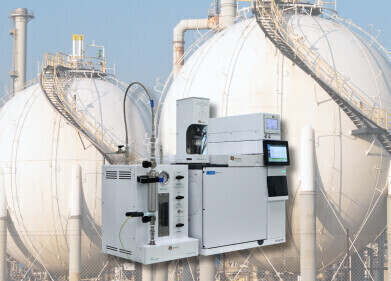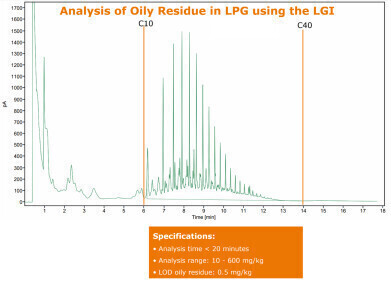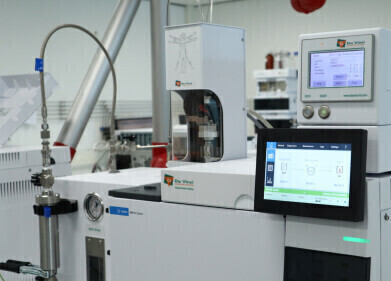Analytical Instrumentation
New Approach of Liquid Gas Injection for GC Analysis
Nov 14 2023
Current GC methods for the analysis of liquefied gases use a rotary valve to inject a liquefied gas sample into a Gas Chromatograph (GC). A new approach applies the Liquefied Gas Injector (LGI) to inject gas samples under pressure in liquid form directly into a GC using electrical solenoids on a time basis. This direct injection offers several benefits over the use of rotary valves: it eliminates the need for evaporation of the liquid gas and also avoids discrimination or adsorption. As a result a better repeatability is achieved and a variable injection volume is allowed.
Sample Introduction and Analysis
The setup of the LGI analysis consists of an Agilent gas chromatograph (GC) on which the Liquefied Gas Injector and its controller are installed. A Pressure Station is used for safe and accurate sample introduction of LPG.
The LGI directly injects the liquefied gas into the GC inlet to ensure the safety and the full transfer of the impurities onto the GC column. The chromatographic analysis is based on boiling point separation of the impurities.
The result is reported in mg/kg and detection limits of <0.1 mg/kg for individual impurities in liquefied gases are easily achieved using the LGI. The analysis of the impurities in LPG is completed within 20 minutes.
Application Range
The Liquefied Gas Injector technique is standardised as the ASTM D7756 and EN 16423 method for the analysis of oily residue in LPG. The LPG fuel specification lists the D7756 as an alternative to the stain method.
Apart from residue analysis the LGI can be used for various liquefied gases under pressure such as:
- Amines in LPG;
- Benzene and Toluene in LPG (ASTM D7756);
- Elemental sulfur in LPG;
- Nitrogen, carbon dioxide, hydrogen sulphide and hydrocarbons in (un)stabilised gas condensate;
- Composition & impurities analysis in butadiene, crude C4 & raffinate (ASTM D2593, D4424, D2426);
- Oxygenate traces in liquid hydrocarbon matrices (ASTM D7423, D7754);
- Hydrocarbon composition of LPG (ASTM D 2163, ISO 7941).
Listen to the webinar
On September 14th, 2023 Agilent conducted a webinar on the new approach using the Liquefied Gas Injector. The speaker: Lou Cheng of Da Vinci explains the need for liquefied gas analysis, the available test methods, the principles of injection and sample introduction when using the LGI. Finally he shows some examples of LGI applications. Register here to listen to a recorded webinar on the Injector or contact us.
Digital Edition
PIN 25.1 Feb/March
March 2024
In This Edition Safety - The technology behind the ION Science Tiger XT - Safety with ammonia and LOHCs as hydrogen carriers Analytical Instrumentation - Discussion on new tribology te...
View all digital editions
Events
Apr 30 2024 Birmingham, UK
May 03 2024 Seoul, South Korea
May 05 2024 Seville, Spain
May 06 2024 Riyadh, Saudi Arabia
May 06 2024 Houston, Tx, USA




















